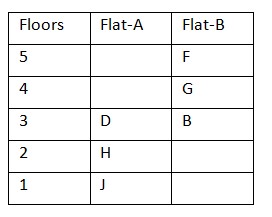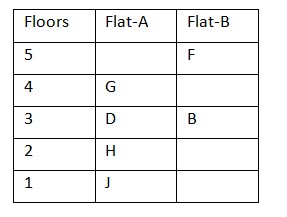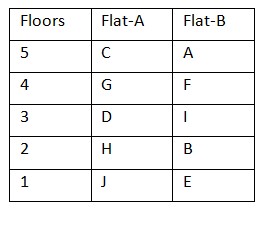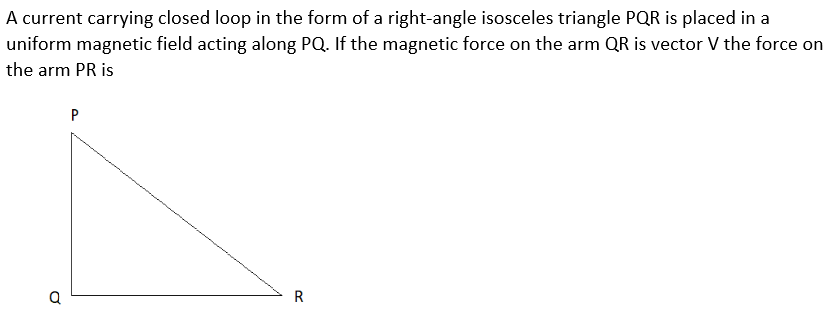Question
__ and __ live on same
floor. Answer the questions based on the information given below: Ten persons (A, B, C, D, E, F, G, H, I and J) live on 10 different flats of a 5 storey building, where the bottommost floor is 1 and the floor above is 2 and so on. There are 2 types of flats on each floor, flat A and flat B such that flat A is in the west of flat B. Flat A of floor 1 is immediately below of flat A of floor 2, which is immediately below of flat A of floor 3 and so on, similarly for flat B. The dimensions of each of the flats is same There are two floors between the floors of J and G (both of them may or may not live in the same type of flat). J lives on first floor. J lives south west of B. F lives 2 floors above B (both live in the same type of flat). D lives immediately above floor H, who doesn’t live anywhere below B’s floor. A lives above D’s floor but not in flat A. E doesn’t live on a prime numbered floor. C doesn’t live immediately above B.Solution
There are two floors between the floors of J and G (both of them may or may not live in the same type of flat). J lives south west of B. J lives on first floor. F lives 2 floors above B (both live in the same type of flat). D lives immediately above H, who doesn’t live below anywhere B’s floor. So, G must live above J’s floor either in flat A or B. Both F and B live in flat B. Case 1: When G lives in the flat B.  Case 2(a): When both G and J live in the same flat and J lives on 1st floor. H doesn’t live below B’s floor, so this case is not possible.
Case 2(a): When both G and J live in the same flat and J lives on 1st floor. H doesn’t live below B’s floor, so this case is not possible.  A lives above D’s floor but not in flat A. E doesn’t live in a prime numbered floor. C doesn’t live immediately above B. So, A lives in on 5th floor in flat B. Case 2(b): When both G and J live in the same flat and J live on 1st floor. The final arrangement is as follows:
A lives above D’s floor but not in flat A. E doesn’t live in a prime numbered floor. C doesn’t live immediately above B. So, A lives in on 5th floor in flat B. Case 2(b): When both G and J live in the same flat and J live on 1st floor. The final arrangement is as follows: 
Which of the following types of coal is called a brown coal among the following?
Consider the reaction-
Copper sulphate solution (blue) + Iron → Iron sulphate soluton + Copper What is the colour of the iron sulphate solution?
Which of the following is NOT correct about the use of Quick lime?
A metal ball of volume 0.02 m³ is immersed fully in water. Find buoyant force. (Take g=10 m/s2, ρ = 1000 kg/m3)
Which among the following is produced using ‘Haber Process’?
If ice floating on water in a vessel melts, the water level in the vessel .

Study the following questions carefully and choose the right answer:
The main thinking part of the brain is the _______?
Which of the following is not an algae?
Kindly Study the following questions carefully and choose the right answer.
Which of the following is/are true with respect to Amoeba?
I...
Relevant for Exams:


